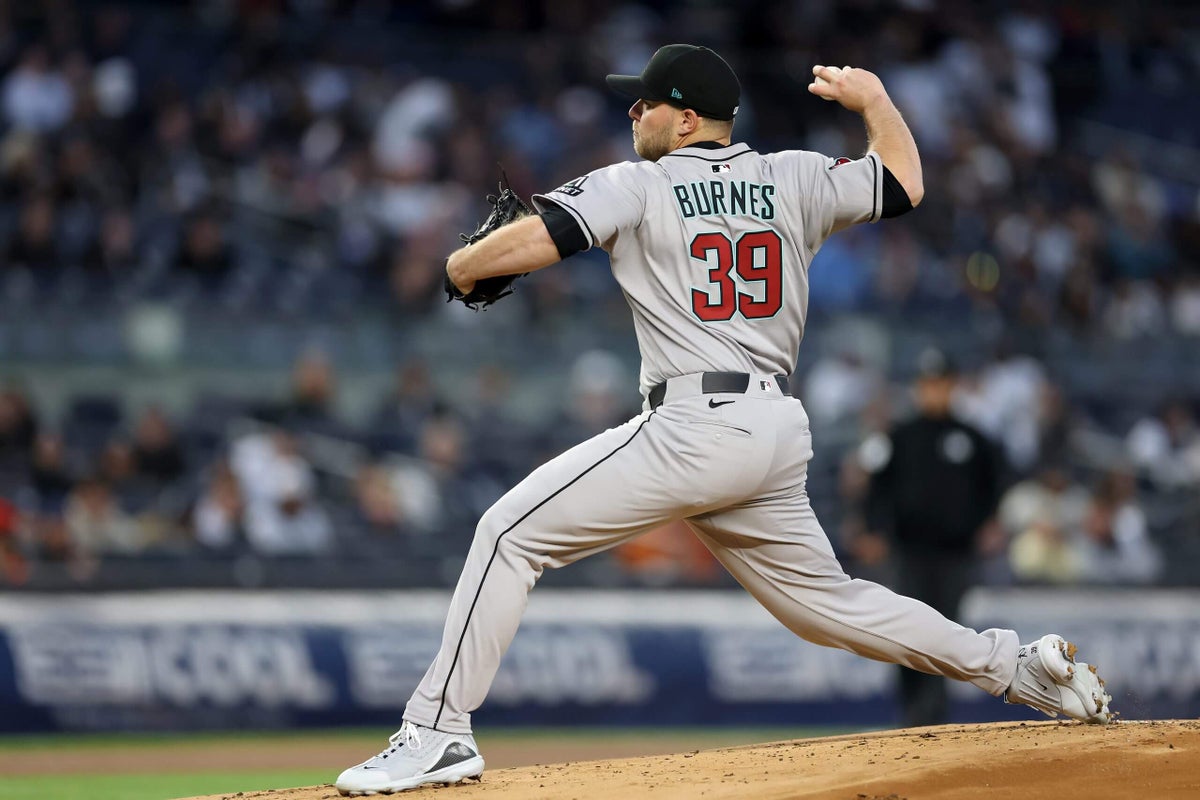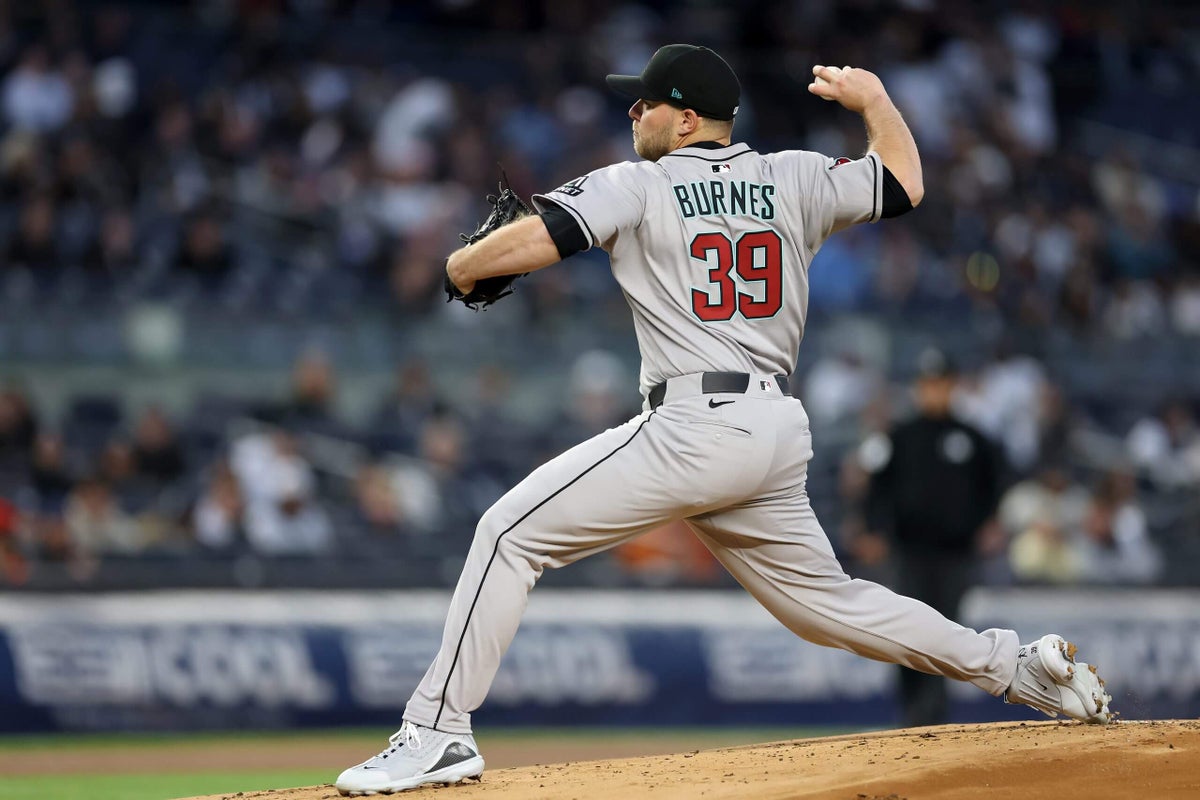
NEW YORK — At times last season, Baltimore Orioles catcher Adley Rutschman would look up from his crouch and notice hitters wielding bats shaped like a torpedo.
“As a catcher,” Rutschman’s former teammate Corbin Burnes said, “you can see it right away.” The look of the bat is distinct to the trained eye. The potential effectiveness of the bat took more time to reach critical mass.
Advertisement
“I think it took the Yankees having a big series, and all of a sudden, it blew up,” Burnes said after a 7-5 victory over the Yankees in his Arizona Diamondbacks debut.
Indeed. The biggest story stemming from Major League Baseball’s opening weekend was the offensive outburst by the Yankees and the oddly-shaped bats doing the damage. With several members of the club swinging torpedo bats, the Yankees scored 36 runs and swatted 15 home runs against Milwaukee. Before the weekend was over, hitters across the league were seeking torpedoes of their own, with bat companies scrambling to meet the demand.
Seasoned observers were unsure how much credit for the scoring should be attributed to the bats. After all, reigning American League MVP Aaron Judge hit four of those homers while still swinging conventional lumber. A day after the Brewers left New York, the Milwaukee pitching staff surrendered 11 runs to Kansas City. No Royals were using torpedoes, according to a team official.
On paper, the matchup on Tuesday at Yankee Stadium suggested a useful data point for the technological innovation. The Yankees were facing Burnes, the recent recipient of a six-year, $210 million contract, with the temperature dipping below 50 degrees in The Bronx.
The reality proved less definitive. Burnes lasted only 4 1/3 innings, undercut by a costly fourth-inning error that led to two unearned runs. He struck out eight. He also gave up two solo home runs — one to shortstop Anthony Volpe, who was using a torpedo, and one to outfielder Jasson Domínguez, who was not. Both home runs occurred on belt-high fastballs, which Burnes intended to locate elsewhere.
“Those are pitches that anyone in this clubhouse is going to hit out, as well,” Burnes said. “So the bat’s not doing too much there.”
The schematics of the torpedo bat are fine-tuned for each individual. The idea is to figure out where a player most often makes contact and shift more wood into that area. The simplicity of the innovation amused Diamondbacks starter Zac Gallen.
“That’s the thing that I’ve been saying for the past few days: How did it take this long for somebody to figure it out?” Gallen said.
Several Arizona pitchers chatted about the new lumber as the Yankees took batting practice on Tuesday. The consensus was that the approach should not change. Gallen indicated he would not alter his preparation for his outing on Wednesday to account for the torpedoes. “I could be wrong, but from what I’ve gathered, the bats have just made the sweet spot a little denser, maybe,” he said. “When you’re pitching, you’re trying to stay off the sweet spot, anyway.”
Advertisement
Few pitchers are better at avoiding barrels than Burnes. When he won the National League Cy Young award with Milwaukee in 2021, he missed bats at the same clip as elite relievers, striking out 12.6 batters per nine innings. During subsequent seasons, he was less overpowering but still effective. He increased the usage of his slider and curveball last season, his sole campaign as a Baltimore Oriole. Burnes ranked seventh among qualified starters in soft contact, according to FanGraphs.
The offspeed pitches augment Burnes’ cut fastball, a 95-mph offering that he can spot on both sides of the plate. He utilized the pitch often during his first two innings against the New York lineup on Tuesday. He struck out four in two innings before losing his feel for the cutter in subsequent frames.
Like Gallen, Burnes stressed he did not factor the torpedoes into his pre-start prep.
“It’s nothing new, from what I’ve seen,” Burnes said. “You’ve still got to go out there, you’ve still got to put the ball on the bat. My job is to make sure they don’t put the ball on the bat. For the most part, we did that. Left a couple over the plate. I don’t know if those guys were swinging those bats or not.”
The evening turned on a two-out, eighth-inning grand slam from Diamondbacks third baseman Eugenio Suárez. He was not swinging a torpedo.
(Photo of Burnes: Elsa / Getty Images)

